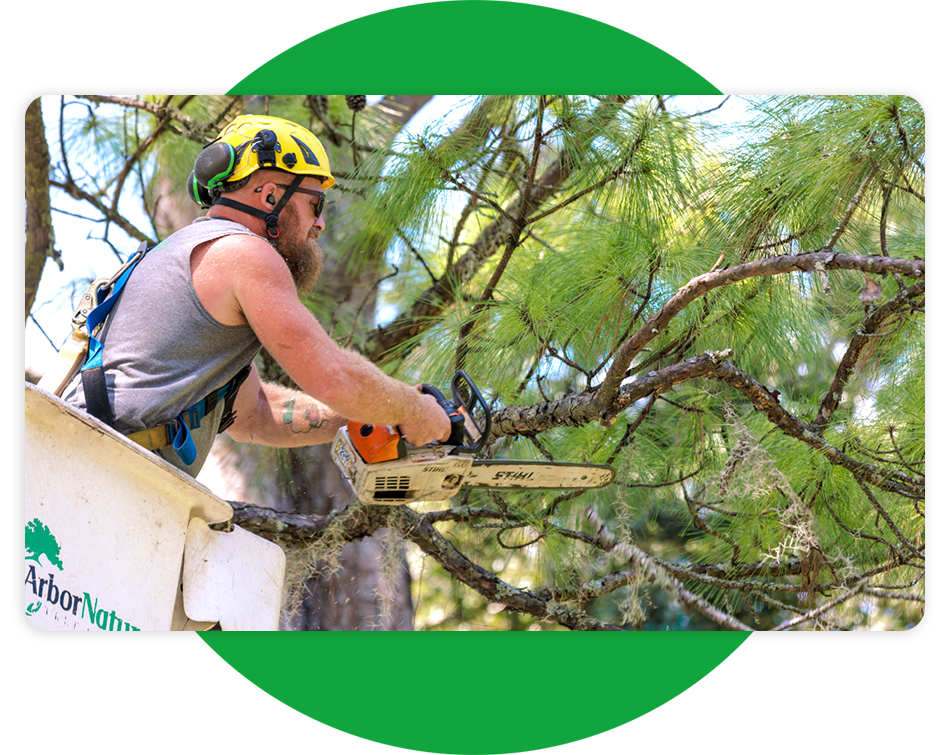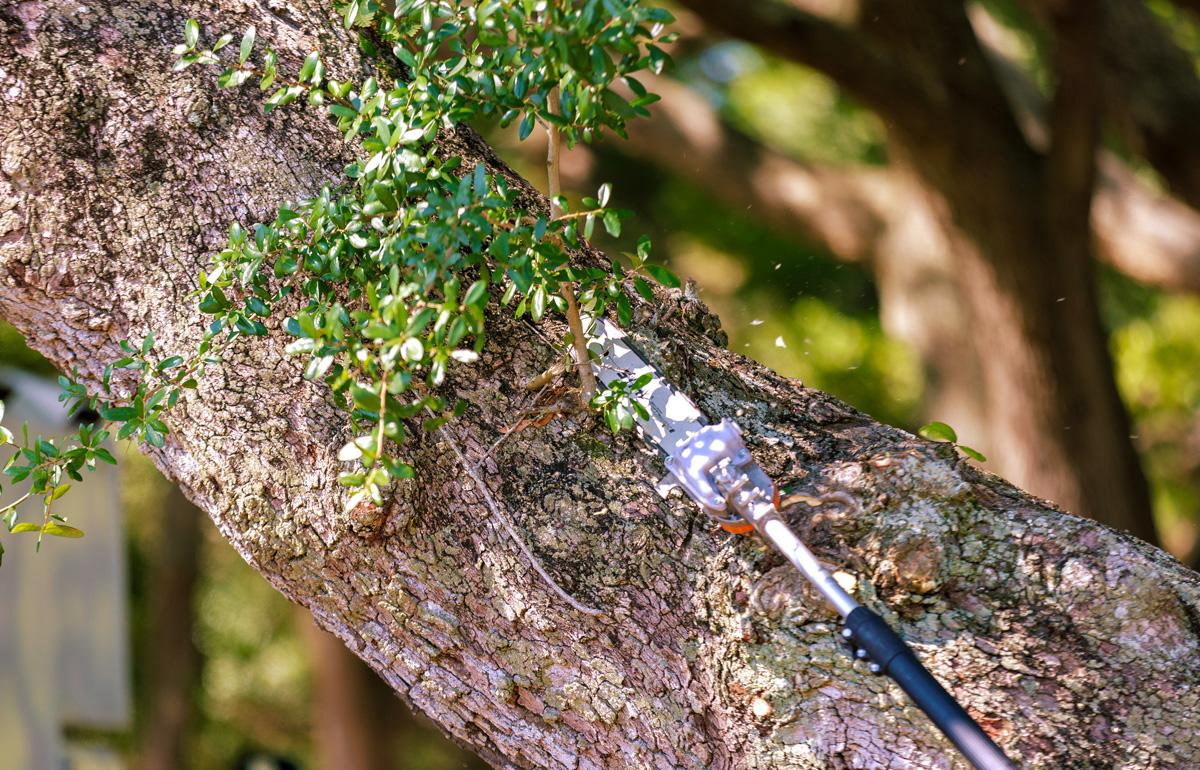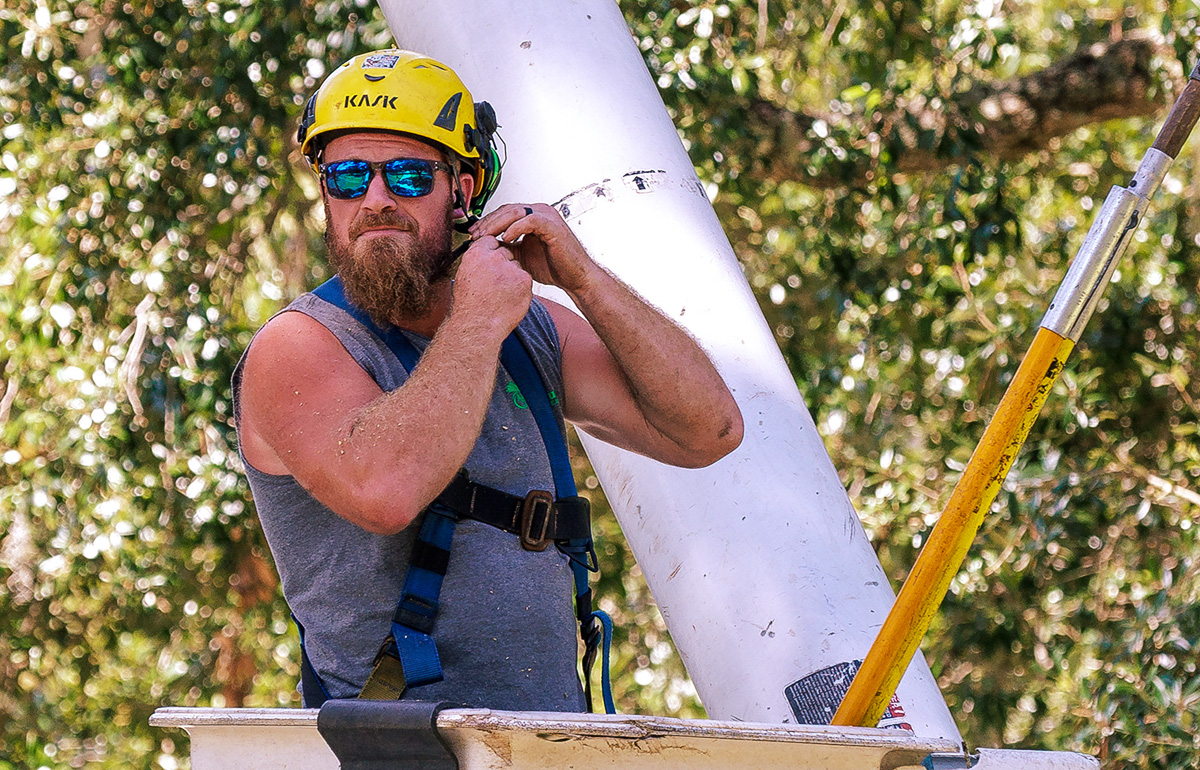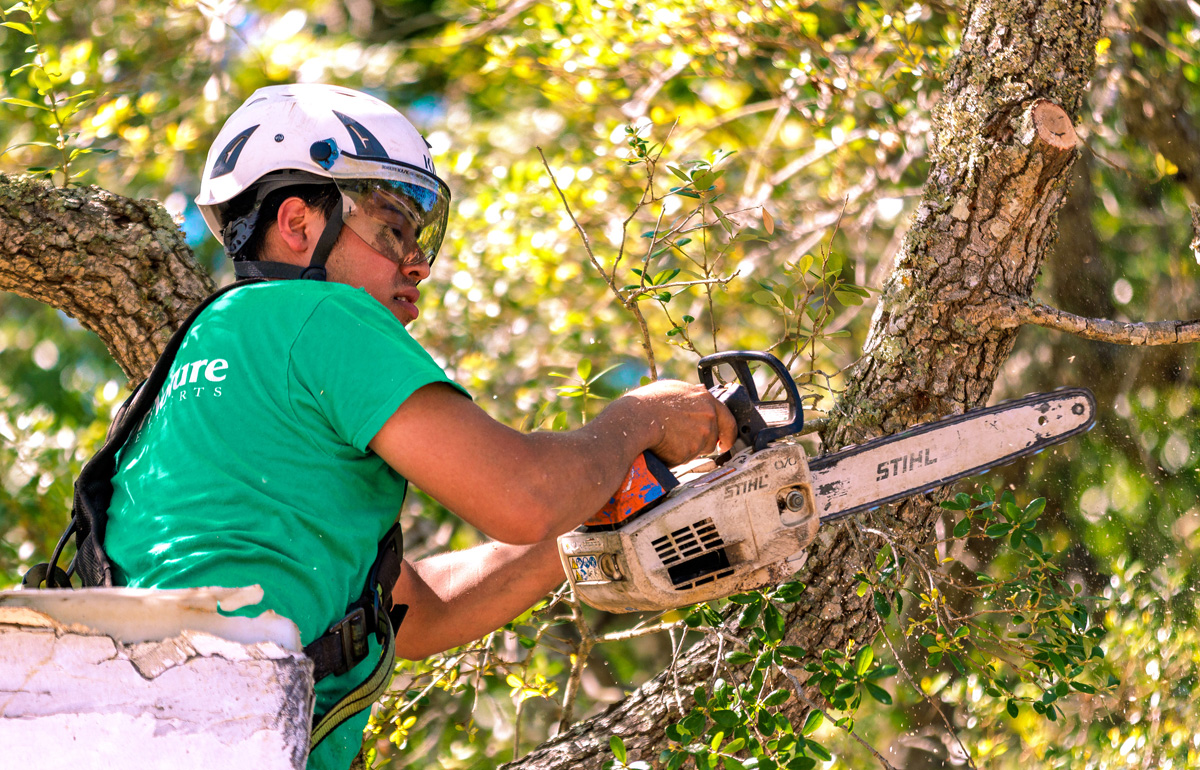Tree Pruning & Trimming
Keep your trees healthy & beautiful
Help your trees thrive with pruning and trimming from ArborNature's tree experts.

Pruning is about more than removing dead branches
Tree pruning is the most popular service we offer—and for good reason. Trees grow better and can live longer when they are well-maintained. Pruning and trimming doesn't just remove dead branches. It improves tree structure, enhances vigor, and keeps you and your property safe.

Pruning mature trees
We consider several factors when pruning mature trees. These include the overall landscape and the time of year, as well as the specific species, size, growth habit, vitality, and maturity of the tree.
The amount of live branches that should be removed depends on the particular tree as well as the pruning objectives. In mature trees, the removal of diseased, broken, or dead branches encourages proper wound closure which is crucial to preventing decay-producing fungi from penetrating and infecting other areas of the tree.
Pruning young trees
When thoughtful pruning is used to promote good structure in young trees, those trees will likely remain as fixtures in the landscape for a longer period of time.
Defects can be removed. A single, dominant leader can be selected, and branches can be well-spaced along the main trunk. Young trees that have been well-maintained have a lower potential for structural failure at maturity and require less maintenance later on. Similarly, small-maturing ornamental trees can be trained to several trunks, or pruned to develop only one.


Pruning techniques for happy, healthy trees and beautiful landscapes
The expert pruning techniques we use at ArborNature help ensure that your trees and your property keep their Lowcountry charm.
Crown cleaning
Crown cleaning selectively removes dead or weak branches and is the most popular type of pruning we do. It prevents minor growth issues from becoming major problems, keeping your trees healthy and your property safe.
Crown thinning
Crown thinning includes crown cleaning plus the selective removal of branches to enhance light, air circulation, and reduce limb weight. This technique also stimulates interior foliage growth and reduces wind resistance in storms.
Crown raising
Crown raising removes lower tree branches to provide clearance for buildings, signs, vehicles, pedestrians, and views. We avoid excessive removal of lower limbs to preserve the tree's structural stability.
Schedule your FREE tree care consultation with one of our arborists.
Schedule now
"The guys today did a great job. I was very impressed with their professional skills and how hard they worked from the time they arrived until they left. They are worth every dollar you pay them. I will hire your company again because of them."

